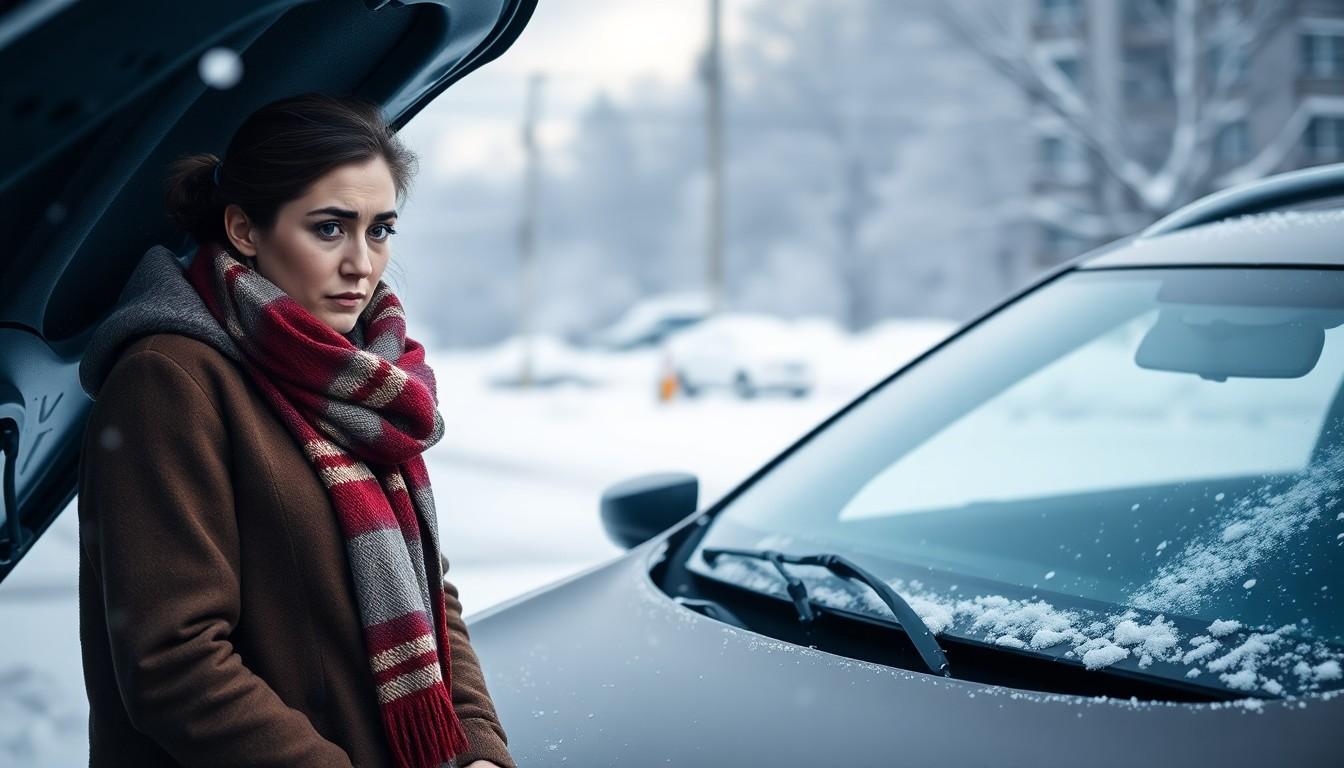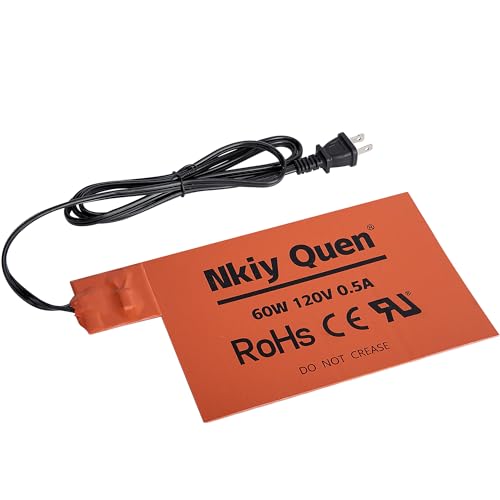Cold weather and dead car batteries—a frustrating combination we’ve all faced during winter months. When temperatures plummet, even the most reliable vehicles can leave us stranded with a battery that refuses to start. But the question that plagues many drivers is whether a battery that dies in freezing conditions will recharge itself once the weather improves.
We’ve researched this common winter driving dilemma to provide you with clear answers. While a dead battery in cold weather might seem like a permanent problem, there’s more to the story than you might think. Understanding how temperature affects your car’s electrical system can save you time, money, and the headache of unexpected breakdowns during the coldest months of the year.
How Cold Weather Affects Car Batteries
Cold weather dramatically impacts car battery performance through several chemical and physical mechanisms. Batteries operate based on electrochemical reactions that slow down significantly when temperatures drop below freezing. At 32°F (0°C), a battery’s capacity decreases by approximately 20%, while at 0°F (-18°C), it can lose up to 50% of its power.
Lead-acid batteries contain electrolyte solution that becomes less effective in cold temperatures. The chemical reactions between the electrolyte and lead plates require heat energy to transfer electrons efficiently. During winter months, this process becomes sluggish, reducing the battery’s ability to produce sufficient current.
Cold weather also thickens engine oil, forcing the starter motor to work harder and draw more amperage from an already weakened battery. This increased power demand occurs precisely when the battery’s output capacity is at its lowest, creating a perfect storm for battery failure.
Extreme temperature fluctuations cause battery components to expand and contract, potentially damaging internal connections and the battery case itself. These physical stresses accelerate wear and can lead to premature battery failure even in relatively young batteries.
Battery charging systems also become less efficient in cold weather. Alternators must work harder to produce the same charging output, yet they typically generate less power in cold conditions due to increased resistance in the charging circuit components.
Modern vehicles with many electronic systems place additional strain on batteries during cold starts. Electronic control units, heated seats, defrosters, and other accessories draw important power immediately upon startup, taxing cold batteries beyond their reduced capacity.
Why Car Batteries Die in Cold Weather
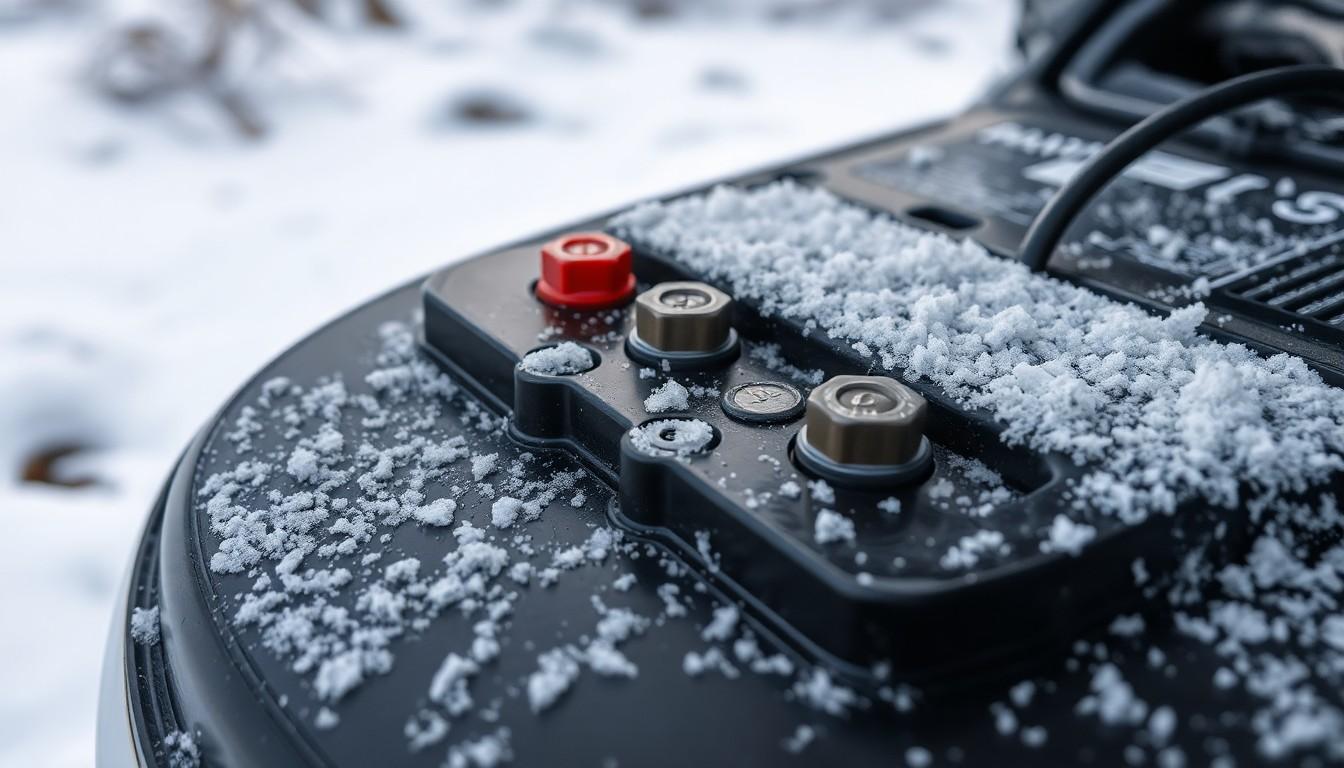
Cold weather creates many challenges for car batteries, often causing them to fail when temperatures plummet. Understanding these cold-weather effects helps explain why your battery might die during winter months and whether it can recover once temperatures rise.
Chemical Reactions Slow Down
The electrochemical reactions that power your car battery dramatically decelerate in cold temperatures. These reactions generate electricity through a chemical process involving lead plates and sulfuric acid in the battery. During winter, this chemical activity becomes sluggish, reducing the battery’s ability to produce sufficient power. The slowed reaction rate directly impacts the battery’s performance, making it harder for your vehicle to start on frosty mornings. This power generation deficit becomes particularly problematic because your engine requires more cranking power in cold conditions.
Battery Capacity Reduction
Your car battery loses important capacity as temperatures drop below freezing. At 32°F (0°C), a typical battery experiences approximately 20% reduction in power output compared to optimal temperatures. The capacity drops even more drastically to about 60% of normal efficiency when temperatures reach 0°F (-18°C). Extreme cold conditions around -22°F (-30°C) cause severe capacity limitations that often prevent engines from starting altogether. These reductions occur precisely when your vehicle demands more power to overcome cold-thickened engine oil and power additional electrical components like heaters and defrosters. The competing factors of increased power demand and decreased supply create the perfect conditions for battery failure during winter months.
Can a Dead Battery Recharge by Itself in Cold Weather?
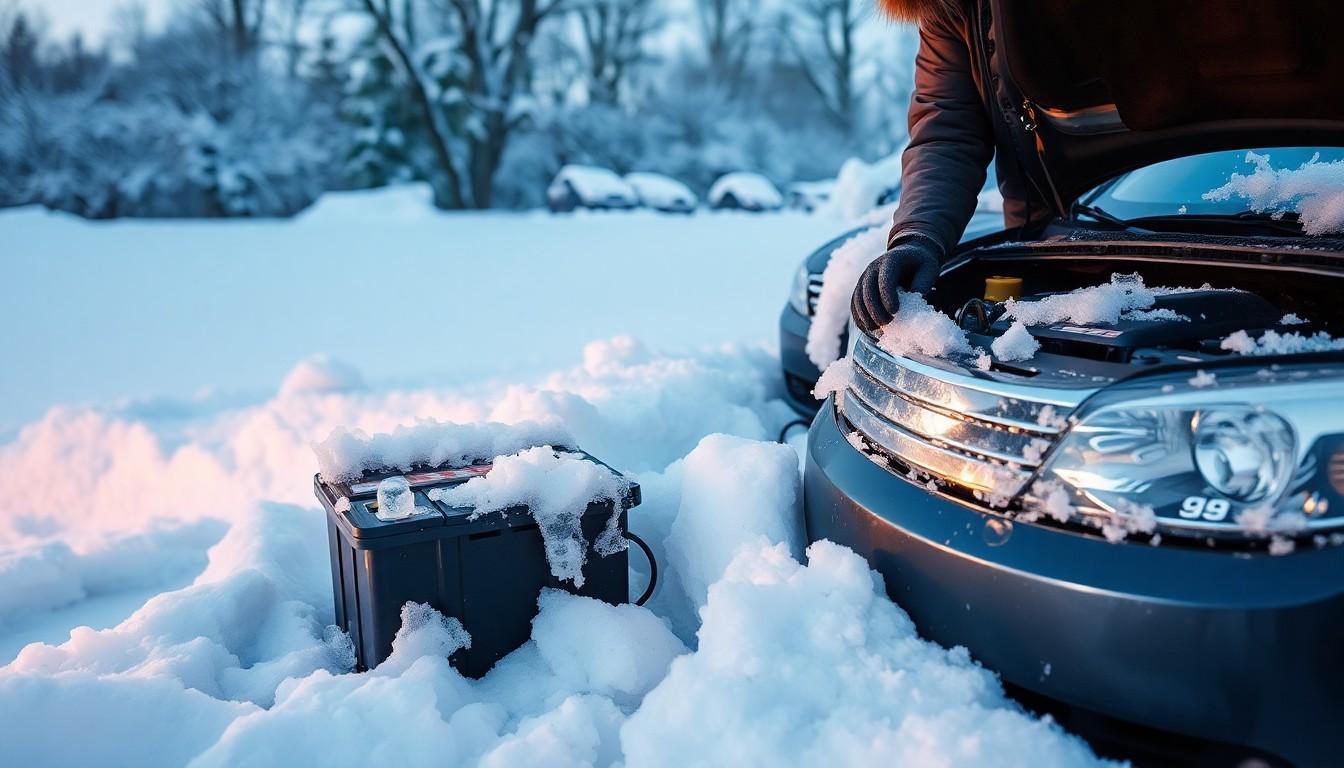
A dead car battery can indeed recharge in cold weather, though the process is less efficient than in warmer temperatures. Cold conditions slow down the chemical reactions within the battery, resulting in longer charging times and reduced effectiveness.
Natural Recharging Limitations
Relying on your vehicle’s alternator to recharge a battery during winter comes with important constraints. Extended driving periods are essential for full recharging – typically 20-30 minutes at highway speeds in moderate temperatures, but considerably longer in cold weather due to decreased battery efficiency. Short trips aren’t sufficient to restore battery power in freezing conditions. Battery experts recommend driving for at least 30 minutes once weekly to maintain proper charge levels during winter months. Smart chargers designed to compensate for temperature variations, such as those manufactured by CTEK, deliver more consistent charging results regardless of the cold.
The Reality of Self-Recovery
Battery self-recovery through regular driving becomes dramatically more challenging in frigid temperatures. Battery capacity drops substantially as the mercury falls, extending the necessary recharging time significantly. Running electrical accessories like headlights, wipers, heaters, and defrosters creates additional load on an already struggling battery, further hindering quick recovery in cold weather. The chemical processes that generate electricity move more sluggishly in cold conditions, making it harder for the battery to rebuild its charge through normal driving alone. Many drivers find that specialized charging equipment becomes necessary during winter months to ensure reliable battery performance and prevent being stranded with a vehicle that won’t start.
How to Properly Recharge a Cold, Dead Battery
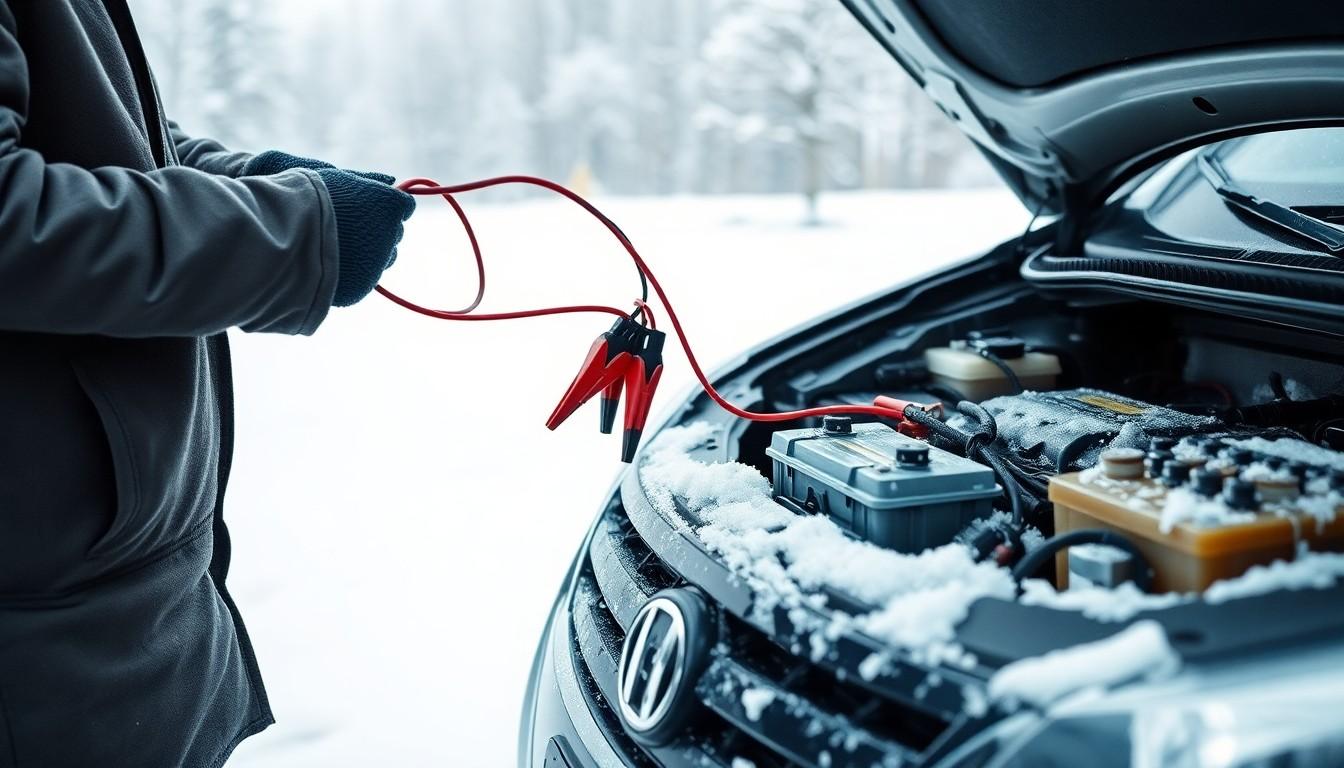
Recharging a cold, dead battery requires exact techniques to avoid damage while restoring power effectively. Cold temperatures significantly slow down the chemical reactions inside batteries, making the recharging process more challenging but still possible with the right approach.
Jump-Starting Techniques
Proper jump-starting is crucial when dealing with a cold, dead battery. Position both vehicles on level ground with engines off, transmissions in park or neutral, and parking brakes engaged for safety. Connect the red jumper cable to the positive terminal of the dead battery first, then to the positive terminal of the good battery. Attach the black jumper cable to the negative terminal of the good battery, followed by connecting it to a solid metal ground on the vehicle with the dead battery, keeping it away from the battery itself. Start the engine of the vehicle with the good battery and let it run for several minutes before attempting to start the vehicle with the dead battery. Once the dead vehicle starts, let both engines run for at least 5-10 minutes to allow initial recharging before disconnecting the cables in the reverse order of connection.
Using a Battery Charger
Smart chargers with temperature compensation features deliver the best results for cold battery recharging. These advanced chargers automatically adjust their output based on ambient temperature, preventing potential damage from overcharging. Charging current should remain relatively low in cold conditions—experts recommend not exceeding 0.2C (which means 20 amps for a 100Ah battery) to avoid thermal stress on the battery. The charging process naturally takes longer in cold temperatures due to decreased chemical efficiency, so patience is essential when recharging a cold battery. Place the battery in a well-ventilated area during charging to allow proper gas dissipation, and avoid fast charging methods which can overheat cold batteries and cause permanent damage. Different battery types (lead-acid vs. lithium-ion) require exact chargers, so always verify compatibility before connecting any charging equipment to your cold battery.
Preventing Cold Weather Battery Failures
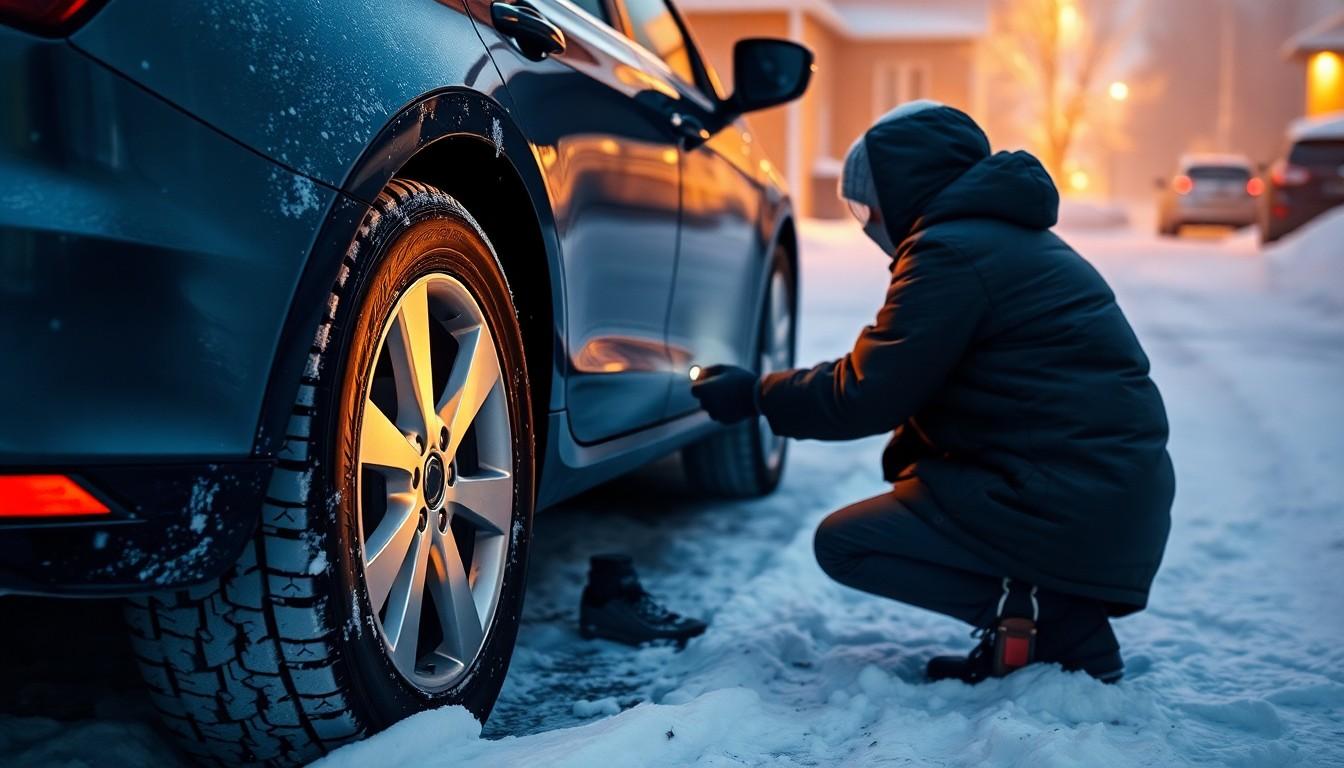
Cold temperatures significantly impact battery performance, but several preventive measures can help maintain reliability throughout winter. Implementing these strategies reduces the likelihood of finding yourself stranded with a dead battery during freezing weather.
Battery Maintenance Tips
Regular maintenance forms the foundation of cold-weather battery reliability. A monthly visual inspection helps identify damage or corrosion signs early, preventing issues that force batteries to work harder in already challenging conditions. Corrosion on terminals creates resistance that reduces charging efficiency and makes starting more difficult in low temperatures.
Keeping battery terminals clean and corrosion-free ensures optimal electrical connections, allowing maximum power transfer during cold starts. Terminal cleaning requires simple household items like baking soda and water, making it an easy but effective maintenance task.
Using a battery maintainer proves invaluable for vehicles parked for extended periods. These devices combat the natural self-discharge process that accelerates in cold weather, maintaining a full charge even when the vehicle sits unused for weeks. Many modern maintainers feature automatic monitoring that prevents overcharging while keeping the battery at optimal levels.
Insulation and Protection Methods
Parking location plays a crucial role in battery protection during winter months. Whenever possible, park your vehicle in a garage or sheltered area to shield the battery from extreme temperature drops. The more moderate temperature inside a garage helps maintain better battery function compared to exposure to sub-freezing outdoor conditions.
For vehicles without access to garage parking, consider using a trickle charger to maintain optimal charge levels. These devices provide a constant low-current charge that counters self-discharge without risking battery damage, particularly beneficial for vehicles driven infrequently during winter.
Driving habits significantly impact cold-weather battery performance. Taking your car for at least 30-minute drives weekly ensures the battery receives adequate charging time. Short trips fail to fully recharge the battery, especially in low temperatures where the charging system works less efficiently.
Advanced battery technologies offer additional protection in cold climates. Batteries with self-heating systems activate when temperatures drop below exact thresholds (typically around 41°F or 5°C), warming the cells and enabling more efficient charging. Selecting batteries with high cold cranking amps (CCA) ratings provides better starting power in frigid conditions, as these batteries deliver more energy during crucial starting moments.
Reducing electrical loads during cold starts helps preserve battery power. Turn off non-essential accessories like heated seats, defrosters, and radios when starting your vehicle in cold weather, allowing maximum power allocation to the critical starting process. Once the engine runs smoothly, these features can be reactivated without straining the electrical system.
When to Replace vs. Recharge a Cold-Damaged Battery
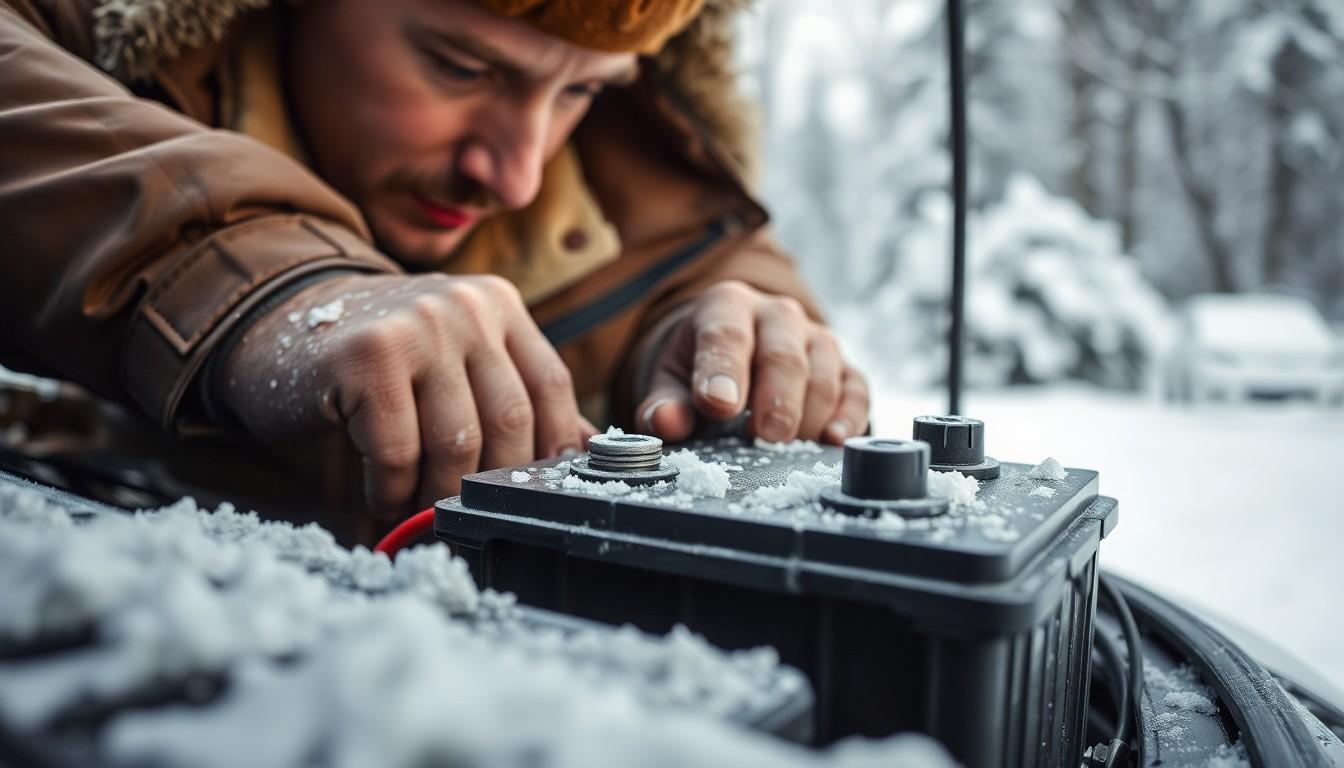
Signs Your Battery Needs Replacement
Dead batteries in cold weather present a common dilemma: repair or replace? The age of your battery serves as the primary indicator of whether replacement is necessary. Most car batteries last between 2-5 years, with shorter lifespans in colder climates where batteries face additional strain. Consistent starting problems, even after successful recharging attempts, strongly suggest it’s time for a new battery. Weak starts that leave your engine struggling to turn over indicate diminishing battery capacity that recharging can’t fix. Professional testing before winter provides the most reliable assessment of your battery’s condition and helps avoid unexpected failures during cold snaps.
When Recharging Is Still Viable
Recharging remains a viable option when your battery is relatively new and has simply discharged due to cold conditions rather than suffering permanent damage. Cold temperatures slow down the recharging process but don’t prevent it entirely. Driving for at least 30 minutes weekly helps maintain proper charge levels during winter months. Shorter trips of 10-15 minutes contribute to recharging, though they’re less effective than longer drives at highway speeds. Your alternator needs sufficient running time to restore the battery’s charge, especially when temperatures drop significantly.
Testing to Make the Right Decision
Battery testing provides crucial data to inform your decision between recharging and replacement. Professional diagnostic tests measure internal resistance, voltage under load, and overall capacity to determine if your battery can still hold a charge effectively. Regular testing becomes increasingly important as batteries age beyond three years. Testing before winter arrives allows you to address potential issues proactively rather than experiencing a failure during freezing conditions. The results from these tests offer concrete evidence of whether your battery merely needs recharging or has reached the end of its service life.
Conclusion
Cold weather significantly impacts your car battery’s performance and charging capabilities. While a dead battery can recharge in cold conditions it’ll take longer and may not fully recover without proper techniques.
The key to winter battery reliability lies in preventive maintenance smart charging practices and adjusted driving habits. By implementing our recommended strategies like regular 30-minute drives using temperature-compensating chargers and reducing electrical loads during cold starts you’ll extend your battery’s life.
Remember that battery age matters when deciding between recharging and replacement. For batteries over 3-4 years old professional testing before winter arrives can save you from being stranded when temperatures plummet.
Frequently Asked Questions
How does cold weather affect car batteries?
Cold weather significantly reduces battery capacity – by about 20% at 32°F and up to 60% at 0°F. The cold slows down chemical reactions inside the battery, making it harder to produce power while simultaneously requiring more energy to start the engine due to thickened oil. Modern vehicles with numerous electronics further strain batteries during cold starts, increasing the risk of failure.
Can a dead car battery recharge itself in cold weather?
Yes, a dead battery can recharge in cold weather, but the process is much less efficient than in warmer temperatures. Chemical reactions slow down, leading to longer charging times. You’ll need extended driving periods (30+ minutes at highway speeds) to fully recharge through your alternator. Short trips are insufficient to restore battery power during winter.
What’s the best way to recharge a cold, dead battery?
Use proper jump-starting techniques with correct cable connections or employ a smart charger with temperature compensation features. Keep charging current low in cold conditions, be patient with the longer recharge time, and ensure your charger is compatible with your battery type. Always follow manufacturer guidelines to prevent damage while restoring power effectively.
How can I prevent battery problems during winter?
Perform regular maintenance including monthly visual inspections and terminal cleaning. Use a battery maintainer for vehicles parked long-term. Park in a garage when possible to shield from extreme cold. Consider trickle chargers for infrequently driven vehicles. Drive at least 30 minutes weekly to maintain charge. Turn off unnecessary electrical loads during cold starts to preserve starting power.
Should I replace or recharge my battery in winter?
Consider the battery’s age first – most last 2-5 years. If your relatively new battery simply discharged due to cold, recharging is appropriate. However, if you experience consistent starting problems after recharging or the battery is nearing the end of its expected lifespan, replacement is likely necessary. Professional testing can help determine your battery’s true condition.
How long should I drive to recharge a battery in winter?
In cold weather, drive at least 30-40 minutes at highway speeds to effectively recharge your battery. The alternator needs this extended operation time to overcome the cold-induced inefficiency in the charging system. Short trips or stop-and-go driving won’t provide sufficient charging and may actually drain the battery further in frigid conditions.
What battery features are best for cold climates?
Look for batteries with high Cold Cranking Amps (CCA) ratings, which indicate better cold-weather starting ability. AGM (Absorbent Glass Mat) batteries generally outperform traditional lead-acid batteries in cold conditions. Some premium batteries feature self-heating systems or improved cold-temperature chemistry. Match the battery’s specifications to your vehicle and climate for optimal performance.

